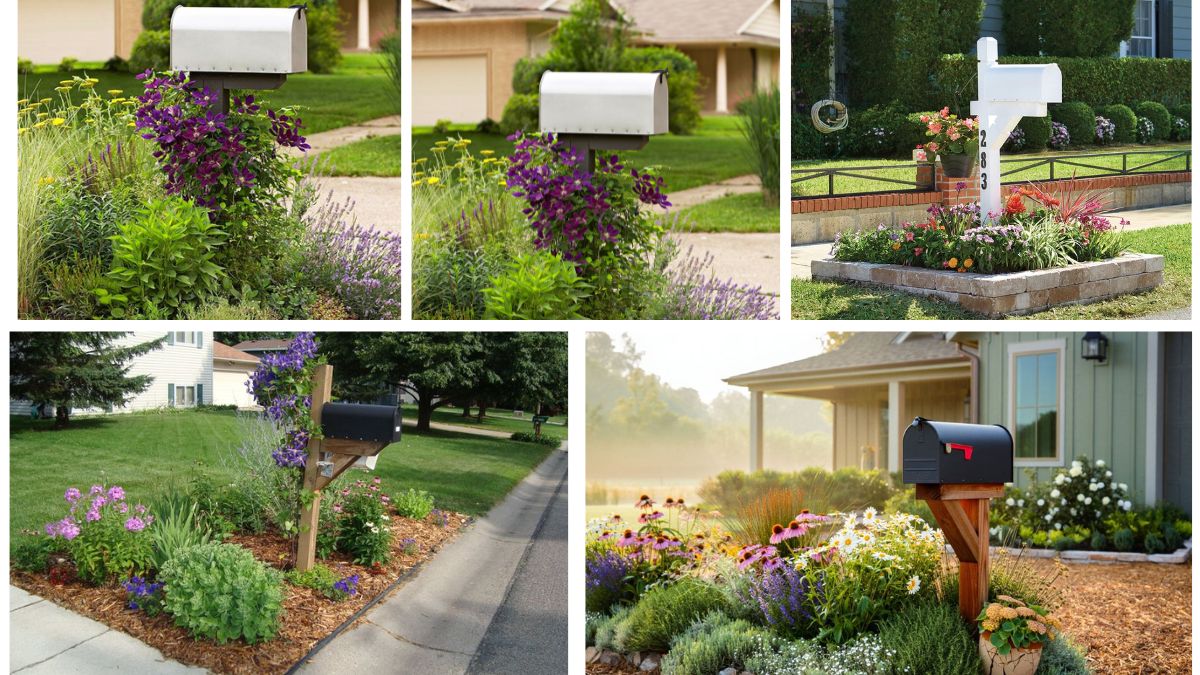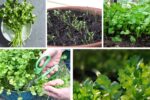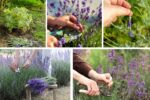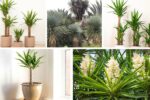The mailbox is one of the first things visitors notice when approaching your home. While it often serves a purely functional role, surrounding your mailbox with a thoughtfully designed flower bed can instantly elevate your home’s curb appeal. A mailbox flower bed creates a charming focal point, blending functionality with beauty while giving your front yard a welcoming touch. With the right flowers, design, and maintenance, your mailbox can transform into a vibrant garden statement piece.
In this article, we’ll explore five creative mailbox flower bed ideas that not only beautify your garden entrance but also express your personal style and love for gardening.
1. Classic Cottage-Style Flower Bed
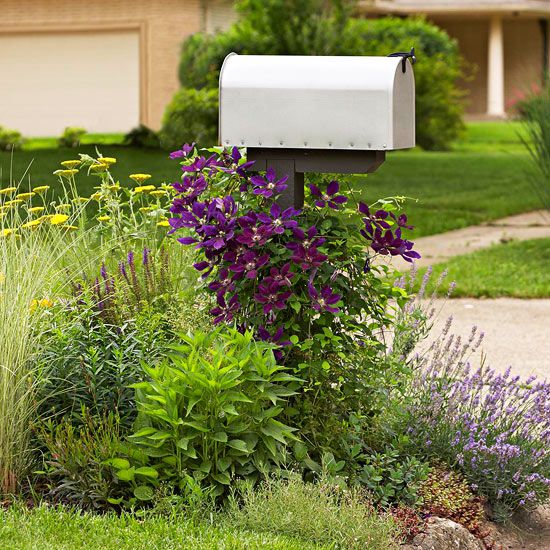
If you love a warm, inviting, and timeless garden look, a cottage-style flower bed around your mailbox is perfect. This design emphasizes dense plantings of colorful, fragrant flowers that feel natural yet cheerful.
Plants to Use:
- Perennials like black-eyed Susans, coneflowers, and daylilies.
- Annuals such as petunias and zinnias for continuous summer blooms.
- Add fragrant herbs like lavender or catmint for aroma and charm.
Design Tips:
- Mix different heights, placing taller perennials at the back and shorter flowers near the mailbox base.
- Choose a harmonious color scheme—pastels for a soft look or bold, contrasting colors for extra impact.
- Use a mulch layer to control weeds and retain moisture, keeping the bed neat.
This mailbox garden design creates a storybook feel, making your entrance look both homely and elegant.
2. Low-Maintenance Succulent Bed
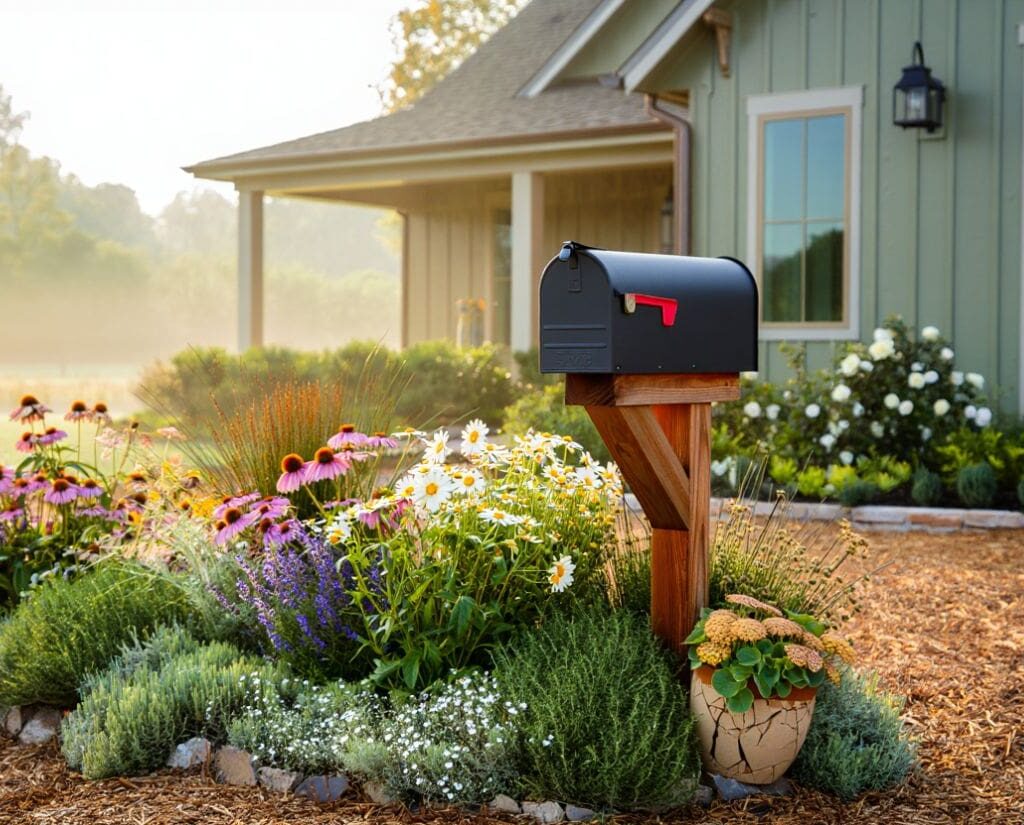
For homeowners who want beauty without the hassle of constant watering and pruning, succulents are a fantastic choice. They’re drought-tolerant, modern-looking, and incredibly versatile.
Plants to Use:
- Sedum varieties for ground cover.
- Rosette-forming succulents like echeveria and sempervivum.
- Accent with taller structural plants like agave or yucca.
Design Tips:
- Use decorative gravel or stone mulch instead of traditional wood mulch.
- Incorporate a few large boulders or ceramic pots for added texture and dimension.
- Plant in a circular or geometric layout for a clean, modern appearance.
This design is ideal for hot climates or busy gardeners who want a stylish yet low-maintenance option.
3. Seasonal Color Explosion
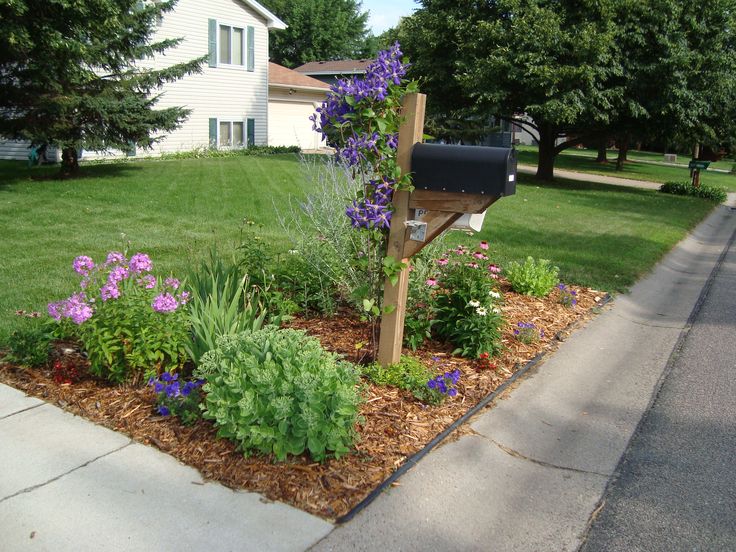
If you enjoy experimenting with vibrant displays that change throughout the year, a seasonal flower bed around your mailbox is perfect. By rotating annuals with the seasons, you can keep your entrance lively year-round.
Plants to Use:
- Spring: Tulips, daffodils, and hyacinths.
- Summer: Marigolds, petunias, and salvia.
- Fall: Chrysanthemums, asters, and ornamental kale.
- Winter: Evergreen shrubs, holly, or potted poinsettias (in mild climates).
Design Tips:
- Plant bulbs beneath the soil for spring blooms that pop up naturally.
- Keep annuals grouped by color for dramatic effect.
- Incorporate decorative seasonal accents like pumpkins in fall or small solar lights in winter.
This ever-changing mailbox bed ensures that visitors are always greeted with something fresh and exciting.
4. Pollinator-Friendly Mailbox Bed
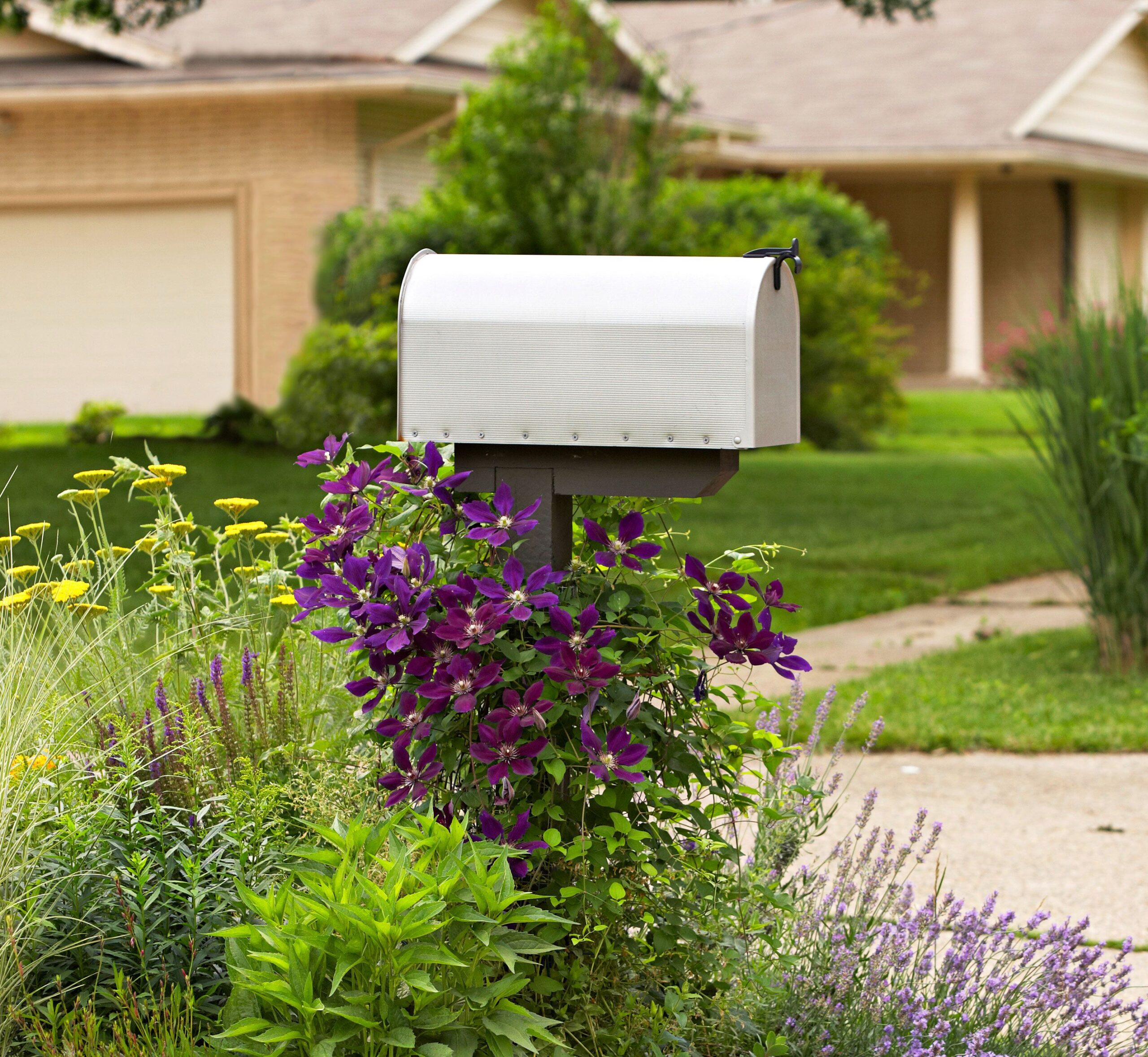
Designing your mailbox garden with pollinators in mind not only adds beauty but also supports the environment by attracting bees, butterflies, and hummingbirds.
Plants to Use:
- Bee balm, echinacea, and milkweed for pollinators.
- Lantana, zinnias, and butterfly bush for butterflies.
- Bright tubular flowers like salvia and honeysuckle to attract hummingbirds.
Design Tips:
- Mix native wildflowers with flowering shrubs for a sustainable, natural look.
- Avoid pesticides to protect pollinators.
- Include a birdbath or small water dish nearby to encourage wildlife activity.
This design transforms your mailbox into not just a garden feature but a thriving ecosystem.
5. Elegant Evergreen and Shrub Design
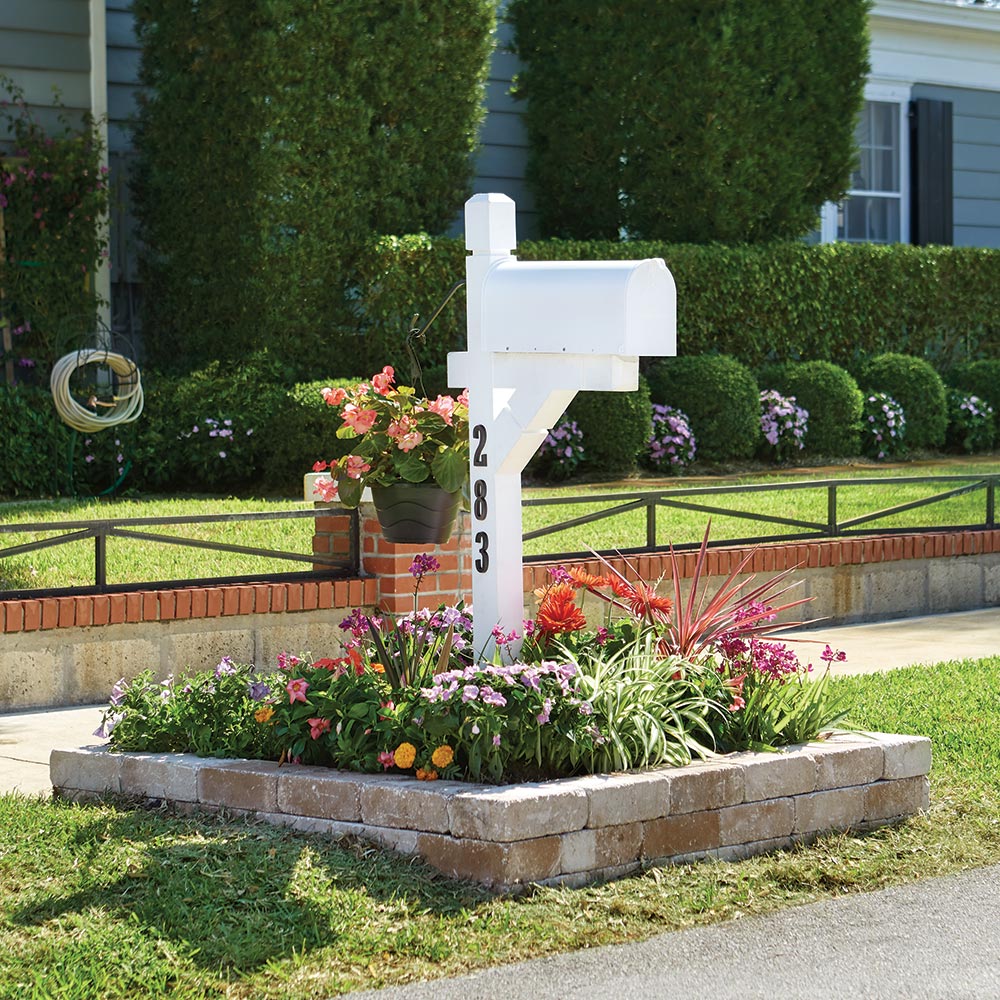
If you prefer a polished, structured, and year-round look, an evergreen and shrub mailbox flower bed is the perfect choice. This style focuses on plants that stay attractive through all seasons.
Plants to Use:
- Compact evergreens like boxwood or dwarf spruce.
- Flowering shrubs such as azaleas or hydrangeas.
- Accent plants like hostas or ferns for added greenery.
Design Tips:
- Arrange shrubs in a symmetrical pattern for a neat, formal look.
- Add a gravel or brick border to define the bed.
- Use seasonal flowers in pots placed nearby for bursts of color without replanting the whole bed.
This approach creates a refined, low-maintenance garden entrance that looks attractive even in the winter months.
Final Tips for Designing Mailbox Flower Beds
- Consider mailbox placement: Ensure plants don’t block access to the mailbox or visibility for the mail carrier.
- Match your home’s style: A cottage-style garden pairs well with rustic homes, while modern succulents suit contemporary architecture.
- Think about sunlight: Most mailbox areas get full sun; choose plants accordingly. If shaded, select hostas, impatiens, or ferns.
- Add hardscape elements: Borders, stepping stones, or small fences can elevate the design.
- Maintain regularly: Deadhead flowers, prune shrubs, and refresh mulch to keep the bed tidy.
Conclusion
A mailbox flower bed is more than just decoration—it’s a chance to make a lasting impression at the entrance of your home. Whether you prefer the charm of a cottage-style garden, the sleekness of succulents, the ever-changing seasonal color, the vibrancy of pollinator-friendly plants, or the elegance of evergreens, there’s a design that suits your taste and lifestyle. With a little creativity and planning, you can transform a simple mailbox into a stunning garden feature that enhances your home’s curb appeal and greets visitors with beauty year-round.
